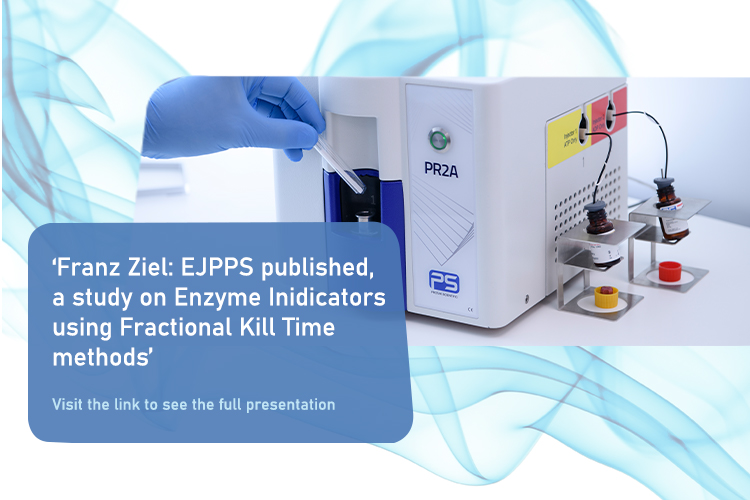Case Study: Franz Ziel’s utilisation of Enzyme Indicators using Fractional Kill Time method
Posted: 3 June 2024 | | No comments yet
An EJPPS published study on Enzymatic Indicators in Vaporized Hydrogen Peroxide Decontamination Cycles: Application-related Research focusing on Fractional Kill Time (FKT) and Reverse Fractional Kill Time (RFKT) Studies
The accepted standard from a regulatory perspective for vaporized hydrogen peroxide (vH2O2) cycle validation is the use of biological indicators (BIs). Novel enzymatic indicators (EIs) are gaining more importance in this field, relying on specific enzymatic reactions for their functionality.
The aim of this work is to determine how enzymatic indicators can contribute to the cycle development process. Emphasis was placed on the initial informative study, the fractional kill time study, which is a basis for future studies.
The results indicate that enzymatic indicators have the potential to facilitate further development of the cycle. This requires an analysis of the determined data, measured in relative light units (RLU), and aligning it with the BI growth, resulting in Full Kill/ No Kill limits. The use of enzymatic indicators for decontamination cycle development opens new perspectives and holds considerable potential for practical use in the development and validation of decontamination processes.
Related content from this organisation
- Case Study: Franz Ziel’s utilisation of Enzyme Indicators using Fractional Kill Time method
- Webinar: How Pfizer utilises Enzyme Indicator technology for bio-decontamination validation
- Video: The EU Annex 1 Good Manufacturing Process (GMP) updated requirements
- Video: An introduction to Protak Scientific and Enzyme Indicators for advanced, gaseous bio-decontamination validation
- Protak Scientific Limited
Related topics
Analytical techniques, Biopharmaceuticals, Bioprocessing, Drug Delivery Systems, Manufacturing, Microbiology, QA/QC, Regulation & Legislation, Research & Development (R&D), Supply Chain










